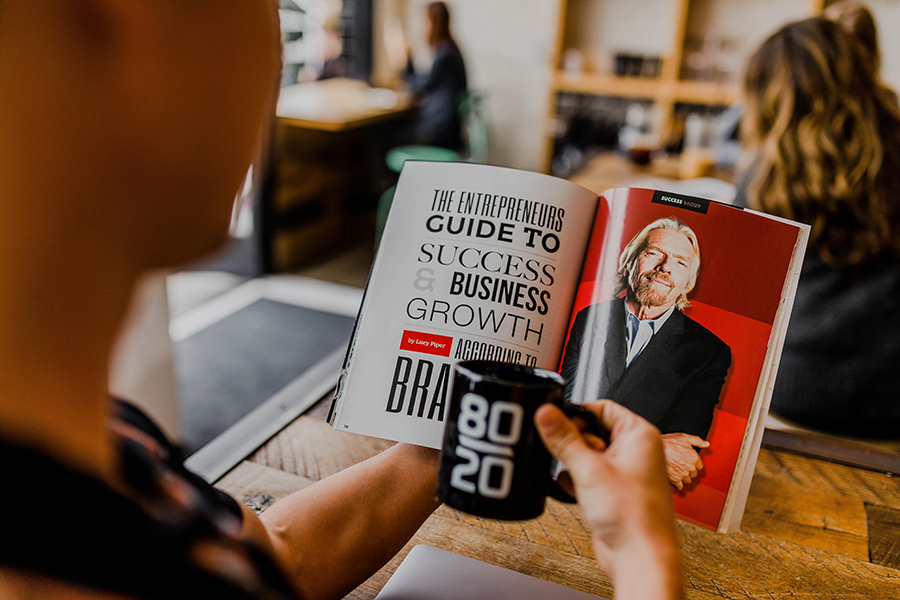Role models can do more than inspire. They are practical and sensible examples of how to do things the right way.
A role model is often a powerful force in your life and career. You can choose to closely emulate the person or select certain traits you can integrate into your individual style. Anne, for example, a financial services executive we interviewed, said Sallie Krawcheck was a role model because she demonstrated that a woman could rise to the top of a predominately male organization.
A role model is frequently a game-changer who shows you a different way, an alternative path to finding your true north. Motivating role models challenge you, sometimes getting you to test your assumptions about handling yourself. For some, a role model can also be practical, sensible, and down-to-earth.
The Game Changer
Highly successful businessman and former mayor of New York City, Michael Bloomberg credits much of his success to the late William Solomon. Solomon was a managing partner at Solomon Brothers when Bloomberg began his career as a trader. For example, Bloomberg said Solomon “made his own decisions and didn’t look back.” Those lessons were game-changers for Bloomberg because he took them with him when he started a company with three other former Solomon employees
Amy, a corporate manager at a major pharmaceutical company, told us about her first boss, Evelyn. Evelyn solicited and listened to Amy’s ideas, encouraged her to seek various opportunities, and then empowered her to take action. Evelyn was a game-changing role model who gave Amy the confidence that she was going to be successful.
Tony, a martial arts instructor, saw his captain in the Marines as a game-changer because he had a robust personal code of ethics. Tony said it was the force of his example that led me, “to stop shifting the blame on to others, but rather accept and own it.”
Some game-changers can be inspirational, too. It is the power of their example that emboldens you to choose another path or forge ahead on your current avenue, but with renewed vigor.
The Motivator
Some leaders, our research shows, are both a motivational force and a role model. Dick, another corporate executive in our interview group, said that Bill was a motivational positive influence leader. Bill was an informal mentor who inspired Dick to take responsibility for his actions, especially regarding how you treat people. However, Bill was also an efficient, positive influence role model leader. As Dick told us, “I watched him every day and was especially impressed by the fact that he behaved the way he talked.”
In her long career as a sportswriter, Nancy was fortunate to work for Terry Taylor at the Associated Press. Terry was both a supportive and motivating positive influence leader. She gave Nancy opportunities that made her realize she wanted to be a sportswriter. However, she was also a significant role model because, as Nancy shared with us:
“When you’re a woman in a male-dominated industry, there are so many additional challenges. People question your ability as well as your motivations. People want to preserve the status quo. Seemingly trivial details, such as what you wear to work, take on added importance.”
The Practical One
Some role model leaders provide a heavy dose of pragmatic, down-to-earth positive influence with just a dollop of inspiration. While they hope you will change, they seem to make a point of wanting you to create your own leadership style.
Well-known financial advisor, author, and TV host, Suze Orman says It’s not about creating a cookie-cutter mold of yourself. Orman believes the best mentors help people find their own path and develop their unique definition of success. “While someone may admire you,” says Orman, “they should never feel the need to be exactly like you.”
Ray, a senior-level IT executive whom we interviewed, saw his boss, Fred, as a role model, but with a twist. Ray admired and wanted to adopt his style of being forthright about the desired goal of a project. However, Ray adapted that style to be more aligned with his inclusive personality. For example, when Ray was working with the company’s local management team in Chile, he approached them not with, “my way or the highway,” but with, “how can I help with your issues?” However, he always kept his eye on the end goal of the project.
Another one of our study group members, Jennifer, saw her boss as a practical role model. She admired and wanted to be like him because he created “a no-nonsense” culture where the focus was on, “work fast, never say no and innovate whenever possible.” He also provided, “very little day-to-day oversight which gave me the freedom to lead my own group and grow as a manager.”
What type of role model are you?
What do you do to be a positive influence role model on others? For more stories of positive influence role models and how you can become a positive influence leader, pick up a copy of our new book, Positive Influence: The Leader Who Helps People Become the Best Self (HRD Press, 2020). www.thepositiveinfluenceleader.com




































